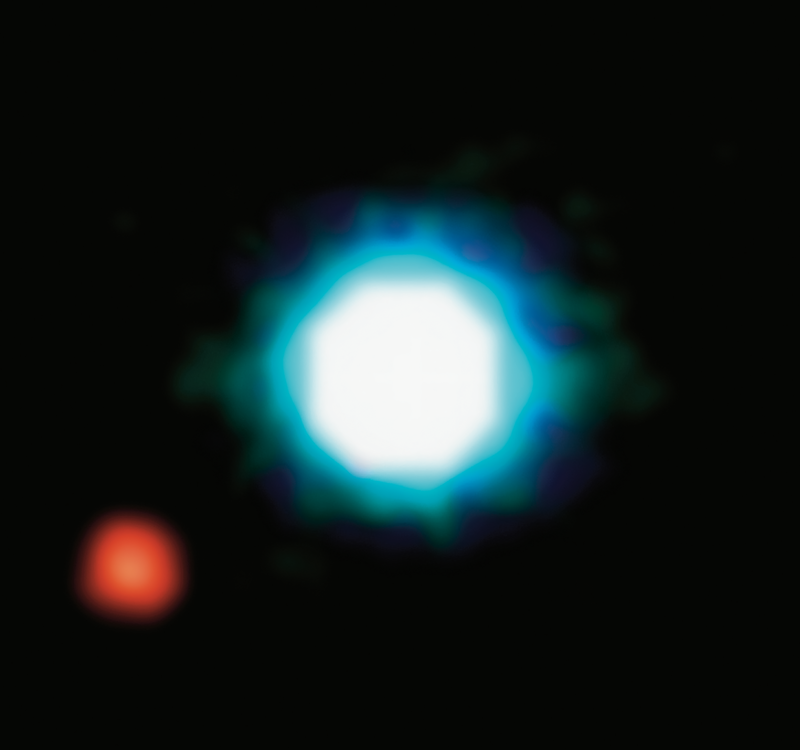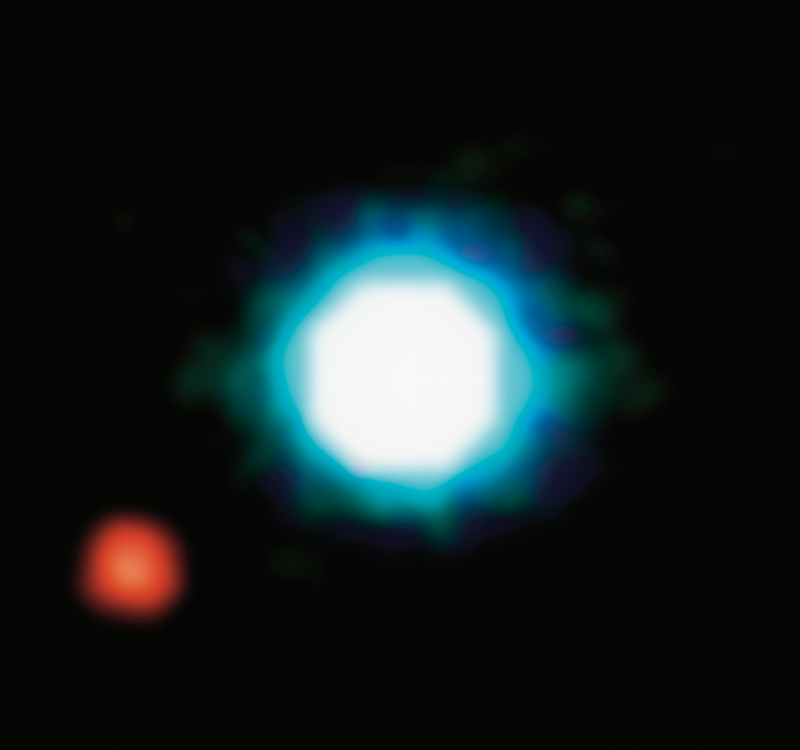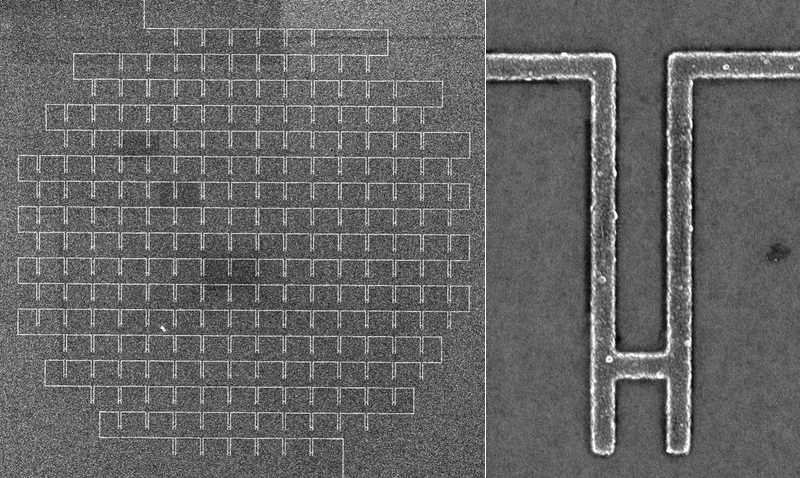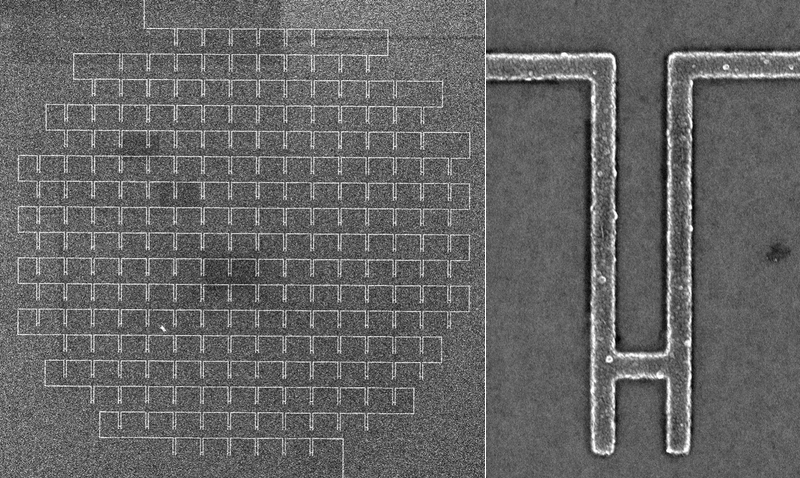Infrared Single-Photon Detector for Astronomy
Many areas of astrophysics, cosmology, and exoplanet research would benefit from a highly sensitive and stable detector for light at wavelengths in the 10–100 µm range. Now researchers report building a detector that operates at 25 µm and that is suitable for hours-long operation in a telescope pointed at faint sources [1]. The device exploits the extreme sensitivity to light of a superconducting material patterned into a miniature photo-absorptive structure. The researchers expect that the design will find use in space telescopes launched in the next few years.
Light at wavelengths in the range 10–100 µm may carry crucial spectroscopic clues about biogenic gases in exoplanet atmospheres and could also help astrophysicists pin down details of early planetary formation and galactic evolution. Yet building detectors for this range of wavelengths is challenging for several reasons, says astrophysicist Peter Day of the California Institute of Technology (Caltech). Because the light from these sources is so faint, the detector has to perform stably over many hours of observation. Each pixel of the detector has to be capable of registering single photons yet also be accurate for sources as much as 100,000 times brighter than the faintest detectable source. The detector must also have an efficient way to read out information rapidly from thousands of identical pixels.
For wavelengths longer than 200 µm, some existing detectors meet these demands. For example, researchers have built a so-called kinetic inductance detector (KID), which registers a photon when the photon breaks a Cooper pair of electrons in a superconducting material [2]. But for light of slightly shorter wavelength, existing detectors lack sufficient sensitivity. Moreover, says Day, while existing detectors use an antenna structure to gather the incoming light, that technology is inefficient for wavelengths shorter than about 100 µm. “To realize a detector for this range of wavelengths, we needed an entirely new design,” he says.
Day and his colleagues set out to build a detector for 25-µm photons, a wavelength of particular interest for space-telescope studies of exoplanets, as many biogenic gases have spectral features near this wavelength. The main challenge, he explains, was in building a detector that could absorb such photons efficiently in a very small volume of superconducting material. The smaller the volume, the higher the density of broken Cooper pairs resulting from incoming photons, which is what determines the detector’s response.
The team used aluminum, a superconductor below 1.2 K, printed on a surface as a narrow meandering line of a 40-nanometer-thick film, giving a superconducting element with a total volume of 11 µm3. Thanks to the material’s index of refraction, 25-µm photons propagate at a shorter wavelength inside the aluminum and silicon. The many U-turns of the meandering line provide spacings that are half of this new wavelength, which leads to resonant absorption for these photons. The team fashioned the final detector from 44 such KID elements arranged in two rows on a silicon wafer.
The researchers cooled the device to 150 mK and then measured the ability of the KID elements to detect thermal radiation emitted by a cold source. Varying the source’s temperature from 3 to 42 K provided the type of faint light expected from an exoplanet. The number of detected photons increased with temperature as expected, and the researchers found an almost perfect match between the rate of detections and the predicted rate of photon production from the source. The team also found that the detector could respond accurately to sources with power varying by a factor of a million and that its performance was stable to within 0.001% over several hours, sufficient for exoplanet scans.
“This is very exciting work,” says astrophysicist Sunil Golwala of Caltech, an expert in astronomical detector design who was not involved in the research. “Until now, we have lacked the ability to detect single photons at these wavelengths, and so this is a game changer for all kinds of applications.” In particular, he notes, the low noise and high stability of the device makes it perfect for observations requiring long exposures.
According to the team’s simulations, the wavelength detected by each element can be changed by adjusting the structure of the aluminum strip, so an array of detectors tuned to a range of frequencies could record a spectrum. In future work, Day hopes to improve the detector’s operating characteristics and to increase its size beyond the 44 elements in the current version. “We’ll eventually need arrays of about 1000, and work on those is coming along,” he says.
–Mark Buchanan
Mark Buchanan is a freelance science writer who splits his time between Abergavenny, UK, and Notre Dame de Courson, France.
References
- P. K. Day et al., “A 25-micrometer single-photon-sensitive kinetic inductance detector,” Phys. Rev. X 14, 041005 (2024).
- J. J. A. Baselmans et al., “Ultra-sensitive THz microwave kinetic inductance detectors for future space telescopes,” Astron. Astrophys. 665, A17 (2022).







